Table of Contents
Eating healthily and in a well-balanced way is fundamental to overall well-being. This means we need to eat a variety of nutritious foods and in the right proportions. Because different foods contain different nutrients, a varied diet ensures we get all we need to sustain bodily functions. A balanced diet also helps to keep lifestyle illnesses at bay. So, what are you waiting for? Find out what your diet may be missing and the best 100+ foods for your ultimate well-being.
Start your journey to a healthier, happier life today!
The macro essentials of a healthy diet
Eating the right proportions of macronutrients is the key to a balanced diet.
According to the World Health Organization (1), a healthy and well-balanced diet depends on an individual’s lifestyle, physiological status, cultural context, and dietary customs.
Generally, professionals recommend the following calorie ratios for healthy adults (2):
- 45-65% from carbohydrates,
- 20-35% from fat, and
- 10-35% from protein.
These proportions are very flexible and can be used to personalize diets. On average, this daily dietary recommendation for most adults works out as (3):
- 130 g of carbs,
- 1.1‒1.6 g of omega-3 fatty acids,
- 12‒17 g of omega-6 fatty acids, and
- 0.8 g of protein/kg of body weight.
This means a 75 kg person needs 60 grams of protein per day. For carbs, 130 grams of carbs is considered the essential minimum for the body and brain to function. The average human consumes higher amounts, with estimates of 200 grams for women and 250 grams for men.
The role of macronutrients in a healthy diet
Macronutrients, as the name suggests, need to be eaten regularly and in large amounts (4). Macronutrients are needed for essential functions aside from their additional micro-nutritional content.
Carbohydrates
Carbohydrates or carbs are our main source of energy. They are grouped into sugars, starches, and dietary fibers (5).
Sugars and starches are broken down into glucose, which circulates in the blood as fuel (6). Different types of fiber, meanwhile, help with digestion or lower cholesterol and glucose levels.
Examples of carbs include bread, wheat, fruits, rice, potatoes, corn, and pasta. Other foods like beans, vegetables, and nuts also contain some carbohydrates.
Proteins
Proteins we eat are broken down into various kinds of amino acids during digestion (7). These become the building blocks of proteins we need for the growth, repair, and maintenance of cells (8).
There are 20 amino acids found in protein sources, and nine of these are essential, meaning our bodies can’t make them (9).
High-quality proteins – animal protein or complete protein like dairy, meat, and eggs that provide all nine essential amino acids (10).
Low-quality proteins – a plant-based protein that generally does not have all or a full balance of all nine essential amino acids (11).
Fats
Fats are the slowest yet the most efficient source of energy (12). The most common fats are triglycerides. These all share a common structure with three linked fatty acids (13). Other fats vary in the length and shape of these fatty acid chains.
The four major types of fatty acids are:
- monounsaturated fats
- polyunsaturated fats
The first two are regarded as ‘healthy fats.’ They are good for the heart and contain healthy cholesterol. Two essential polyunsaturated fats, omega-3 fatty acids, and omega-6 fatty acids, come from dietary sources like fatty fish and some oils.
- saturated fats
- trans fats
Saturated fat and trans fat are commonly termed ‘harmful fats.’ Contrary to the two other types of fat, these elevate cholesterol levels and increase the risk of diseases.
Chicken skin and fatty cuts of meat are the usual examples of saturated fats. Trans-fats in processed foods can be found in commercially baked breads and pastries, margarine, and fried foods.
Carbs, proteins, and fats are called macronutrients. We need large amounts of these for energy to perform our daily activities. Carbs contain fiber that can help with digestion, while proteins have the essential amino acids that help with cellular maintenance. Healthy or unsaturated fat, on the other hand, regulates cholesterol levels.
The role of micronutrients in a healthy diet
Micronutrients are vitamins and minerals that the body requires in minute amounts to maintain good health. They generally play an important role in immunity. Micronutrients help to reduce inflammation, fight infections, and mitigate potential health problems (14, 15).
Water-soluble and fat-soluble vitamins
Vitamins come from plants or animals. Vitamins are team players, serving as cofactors or coenzymes, helping the cells in the bodywork, which help one another (16). There are 13 kinds of vitamins which are either fat-soluble or water-soluble (17, 18, 19):
- Fat-soluble vitamins are found in animal products or fatty foods like liver, butter, and eggs. They can be stored in fat cells and broken down when needed.
The key is we don’t need to consume fat-soluble vitamins every day. Here are 4 fat-soluble vitamins and their recommended daily intake for people aged 19-64:
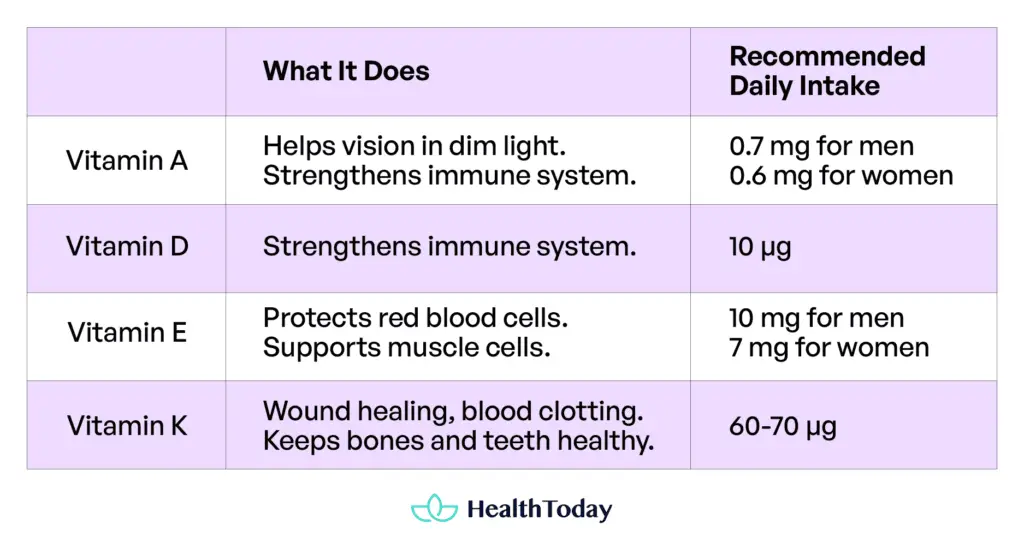
In contrast to fat-soluble vitamins, water-soluble vitamins come mostly from fruits, grains, and vegetables, but also dairy.
- Water-soluble vitamins cannot be stored in the body; therefore, we need to load up on them every day from the foods we eat.
Vitamin C is a key water-soluble vitamin and antioxidant. The eight B-complex vitamins help the body break down carbs, proteins, and fats for energy.
Here are the recommended amounts for adults aged 19 to 64:
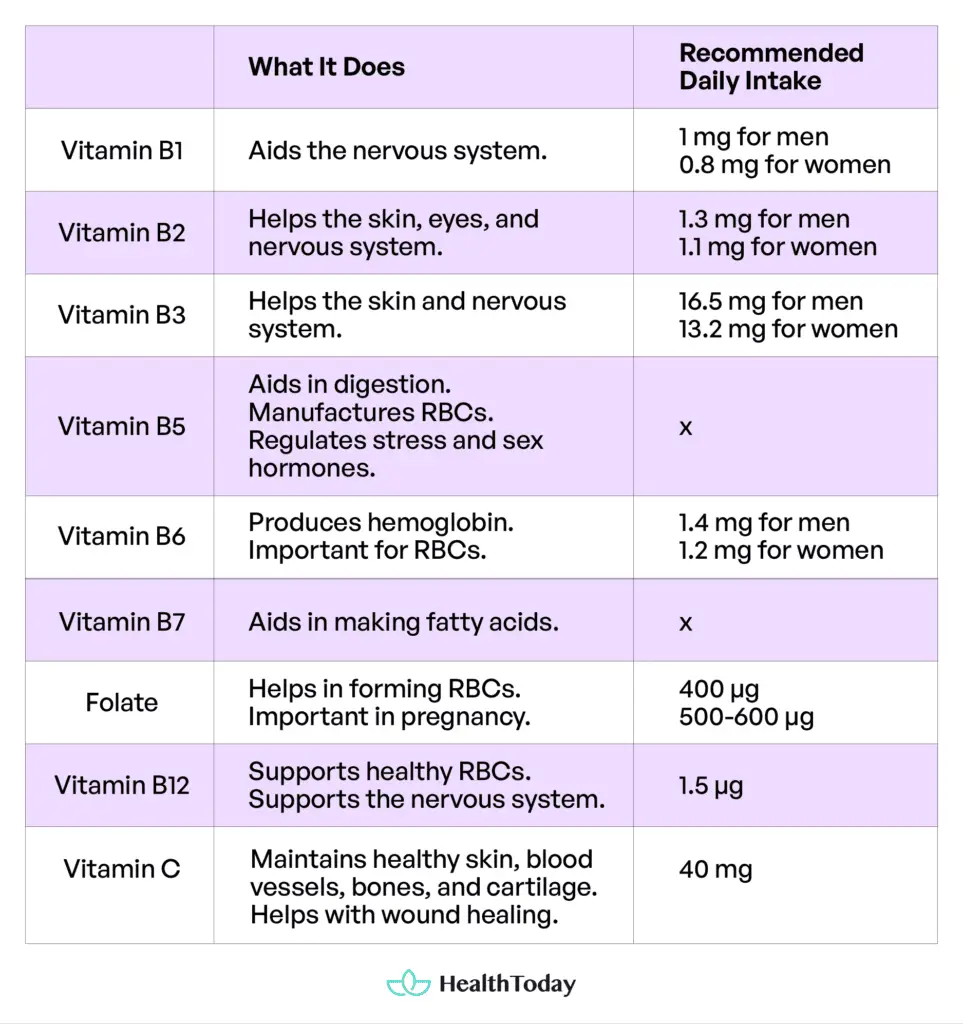
X: No set daily value and no evidence of adverse effects. A varied diet is recommended.
Essential minerals in micronutrition
Minerals come from rocks, soil, or water (20). But often, we consume them via animal products. Minerals are essential because they:
- Control fluid inside and outside cells
- Convert food consumed into energy
- Essential for healthy bones and teeth
Some minerals like iron, zinc, and copper are only needed in minute quantities. Minerals, such as calcium, magnesium, and potassium, are needed in larger amounts (21).
5 good reasons to balance your diet
While macronutrients may come from limited sources, varying your diet is important to prevent micronutrient malnutrition (22, 23). Furthermore, eating well could increase life expectancy by up to 10 years (24).
Deficiencies or excesses in micronutrients are common in people with poor diets, picky eaters, and those who suffer stomach or metabolic abnormalities.
Here are the five key reasons why you should aim for a varied diet:
undefinedundefinedundefinedundefinedundefined
Plant-based foods for a healthy diet
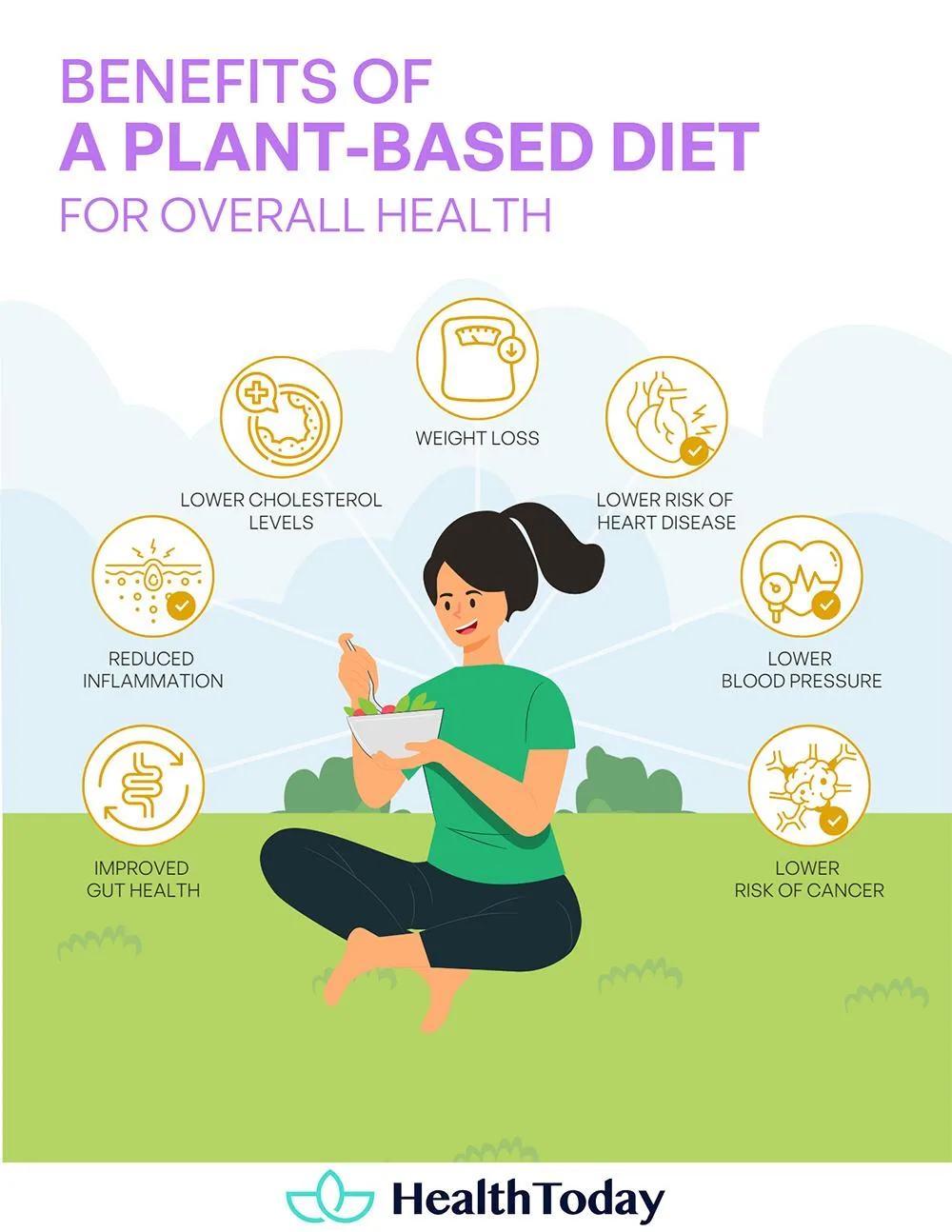
Most vegetables and plant-based foods are healthy choices because they contain important nutrients and are low in calories and unhealthy fats (27).
A nutritious plant-based diet can also lower the risk of type 2 diabetes, obesity, cardiovascular diseases, and other health conditions (28).
Leafy greens
Leafy green vegetables are always a good place to start with a healthy diet. Here are some of their key point:
- Rich in vitamins K, C, A, and other essentials (29)
- Antioxidants such as beta-carotene and lutein for eyes
- Fiber for good gut health
Leafy green vegetables contain beta-carotene, vitamins B9 and C, and are rich in essential minerals such as iron and calcium (30).
- 1 to 7: lettuce, cabbage, bok choy, arugula, kale, watercress, collard greens.
These leafy cruciferous vegetables all contain glucosinolates that help prevent cancer (31). Glucosinolates are broken down into indole during digestion, which also have antiviral, antibacterial, and anti-inflammatory effects (32).
- 8 to 9: Goosefoot vegetables such as spinach and Swiss chard.
These are equally as impressive since they contain nutrients that reduce inflammation and the risk of chronic illnesses such as heart disease and lung cancer (33, 34)
Stems and shoots
These are the edible stalks of a plant. Similar to leafy greens, they contain essential nutrients in proportion to their green color (35). The greener the plant is, the more nutrient-dense it is.
10. Asparagus is dense with folic acid and good for pregnant women and anemics (36).
11. Celery has phytochemicals, vitamin C, and beta-carotene for reducing inflammation and oxidative stress (37).
12. Bamboo shoots contain phenols to promote antioxidation, anti-aging, and antifatigue. They also have phytosterols and dietary fibers good for bowel function and lowering cholesterol.
13. Turmeric is rich in curcumin, which helps in the recovery of muscle soreness and inflammation (38). It’s also good for arthritis, anxiety, and hyperlipidemia (39).
Roots and tubers
These crops grow underground. They come second to whole grains like rice and wheat as a global source of carbohydrates (40, 41). They also contain essential vitamins and minerals, although much can be lost during high-heat cooking processes.
Carrot family (Apiaceae)
14. Carrots are rich sources of carotenoids, a nutrient that is associated with preventing certain cancers and cataracts (42).
15. Parsley contains carotenoids, coumarin, tannins, and certain polyphenols that contribute to improved antioxidant, analgesic, and antidepressant-like effects (43).
16. Parsnips have an abundance of fiber, potassium, and Vitamins C and B6 (44).
Cruciferous roots (Brassicaceae)
17. Turnips and radishes contain glucosinolates and isothiocyanate, which have antitumor and anti-hypertensive effects (45, 46
18. Wasabi and horseradish both have allyl isothiocyanate, which prevents the growth of food-poisoning bacteria and fungi (47).
Amaranth family (Amaranthaceae)
19. Beetroot contains betalains and nitrates that can lower bad cholesterol levels (48). They have also been associated with anti-tumor properties.
Tubers:
20. Cassava is particularly rich in vitamin C and contains resistant starch, a type of starch that acts as a prebiotic and promotes digestive health (49, 50, 51).
21. Potatoes are an important source of micronutrients like vitamins E, C, B1, B6, and B9 (52, 53).
22. Sweet potatoes are rich sources of carotenoids, phenols, and anthocyanins, all of which contribute to gut, liver, and heart health (54).
23. Purple yam has an abundance of antioxidants that can lower blood pressure (55). It also contains cyanidin, a type of antioxidant that can act as an antidepressant (56).
Flowering vegetables and fruits
These can come in different sizes, shapes, and colors, but no matter their appearance, they are loaded with nutrients and bioactive compounds for fighting against diseases.
24. Artichokes are rich in linoleic acids, a polyunsaturated omega-6 fatty acid. These are good for lowering bad cholesterol (57), and improving insulin sensitivity and blood pressure (58).
25. Bitter gourd has an antidiabetic effect owing to the combination of the phytochemicals called triterpene, proteid, steroid, alkaloid, and phenols (59).
26. Okra provides a rich supply of minerals, like calcium, phosphorus, and iron, that are required for maintaining cellular homeostasis (60).
27. Bell Peppers come in many colors, and each provides certain benefits (61, 62):
- Red peppers – richest in lycopene and phenols and anti-oxidation activity.
- Green peppers – are particularly rich in vitamin C.
- Orange peppers – dense in β-carotenes.
Like their leafy counterpart, flowering cruciferous vegetables are also good for you. These are the best of flowering vegetables:
28. Cauliflower has the highest fiber content and choline, which regulates mood, memory, and muscle control (63).
29. Broccolini is a good source of vitamins A and C (64), and
Broccoli provides all the vitamin C needed for an adult for a day in one serving (65).
30. Brussels sprouts are especially rich in vitamin K; one cup provides more than the recommended daily intake (66).
Here’s a little secret—the big outer leaves have a higher nutritional value than the flower buds.
Bulbs or alliums
Foods under the allium family are widely used ingredients in cuisines all over the world. Not only do they enhance the flavors of our food, but have a unique mix of nutrients with therapeutic benefits like antifungal, antiviral, anti-asthmatic, and more (67).
31. Garlic can lower cholesterol and boost the immune system. The active components are organic sulfides, saponins, phenols, and polysaccharides (68).
32. Onions are low in calories and high in vitamin C, B6, B9, and potassium (69). Red onions are rich in anthocyanins that prevent neuronal diseases (70).
33. Leeks contain compounds β-carotene, pectic sugars, and antioxidant tocopherols with anti-cancer properties (71). They also improve blood sugar levels.
Fun fact: Onions of any kind contain 9 to 13 grams of protein per 100 grams (72). That’s about one-fifth of the total recommended serving per day.
Fungi or mushrooms
There are 25 widely used species of mushrooms. They are not only rich in protein but also have medicinal properties, such as anticancer, antidiabetic, antiallergic, and antibacterial. They also have antitumor activity (73).
These mushrooms are some of the healthiest because they are also the best source of the longevity nutrient ergothioneine (74).
34. Maitake mushrooms
35. Oyster mushrooms
36. Enoki mushrooms
37. Shiitake mushrooms
Fun fact: mushrooms, with the exception of enoki mushrooms, are the only non-animal food that is abundant in vitamin D—so perfect for vegetarians.
Best fruits for a healthy diet
Fruits are nature’s natural desserts. Fruits have numerous vitamins, minerals, and especially dietary fiber that help prevent constipation and other digestion problems (75).
Berries
Berries have been enjoyed by many as part of breakfast or snacks. They are high in sugars, but they have low fat and calorie content (76). They are good sources of vitamins E, C, A, B9, and K.
39. Blueberries have the best anthocyanin content (78). These are antioxidants that can prevent the onset of heart diseases and inflammation.
40. Blackberries contain high levels of ellagitannins, a potent phenol that contributes to anti-inflammatory and anti-cancer effects (79, 80).
Citrus fruits
Citrus is one of the most important food crops. They are rich sources of bioactive compounds. Especially polymethoxylated flavones, battle against atherosclerosis, obesity, and cancer (81). They are also rich in vitamins C and E, as well as minerals like selenium, zinc, copper, iron, and manganese.
- 41‒42: Lemon and Lime contain the most citric acid, which prevents the formation of kidney stones (82).
Melons
Melons are versatile fruits that can also be mixed with salads or turned into drinks. Their high water content is perfect for hydration during summertime. They are also an important source of phenolic compounds, vitamin C, and carotenoids (83).
43. Watermelon contains lycopene, essential for protein synthesis in our body (84).
44. Cantaloupes are the best source of beta-carotene, which is important for eye and immune function (85).
Pome fruits
Pomes have a central core with many seeds, like apples do. These fruits are an excellent source of dietary fiber, vitamin C, and potassium (86). Because they are high in dietary fiber and water content, they are good for weight loss and gut health (87).
45. Apples – quercetin, a flavonoid with anti-cancer properties.
46. Pears – arbutin, which works against skin pigmentation (88).
47. Bananas – rich in potassium to control heart rate and blood pressure.
48. Passion fruit – vitamin A for good skin and vision, and vitamin C, an antioxidant.
It is worth mentioning that whole fruits contain twice the amount of nutrients in an equal serving compared to juice. So next time, instead of drinking some orange juice, enjoy its full pulpiness.
Whole grains in a healthy diet
Whole grains are, for the most part, the global source of carbohydrates. They can come in the form of whole-grain bread or whole-grain pasta, which are healthier alternatives to refined grains.
Not only do they contain starch for energy, but they are also rich in B-complex vitamins and minerals like calcium, magnesium, and potassium (89).
Debates come and go about carbohydrate-based diets. However, research has shown that whole grains play a vital role in disease prevention (90). Their consumption reduces the risk of heart disease and gut problems (91).
49. Brown rice is a good substitute for white rice due to its lower glycemic index (92).
50. Oats have the highest dietary protein content good for satiety (93).
51. Barley provides the most starch yet has the least sugar (94).
52. Whole-grain wheat or rye are superior sources of dietary fiber (95).
Legumes
Legumes are a key source of protein, dietary fiber, and phytochemicals. They are key to reducing the risk of cancer and heart disease (96). They are rich in resistant starch, fiber, potassium, and B vitamins and an adequate source of essential fats (97).
53. Chickpeas – superior protein quality and essential fats (98).
54. Black and (55.) kidney beans – rich in antioxidants to reduce chronic illnesses and improve vascular function (99, 100
56. Lentils – control cholesterol levels and reduce blood pressure (101).
57. Soybeans – a complete protein with nine essential amino acids (102).
A special mention about soybeans: Soy is a high-quality protein, and soy foods like tempeh, tofu, and soymilk are all rich in essential nutrients (103).
Nuts and seeds
Nuts and seeds have always been an important component of a healthy diet. They are good sources of healthy fats, fibers, and protein (104). Plus, they are perfect for snacking!
Multiple studies have proved the positive health impact of nuts and seeds. Because they have a similar nutrient profile, they offer similar benefits. Moderate consumption of nuts and seeds can have beneficial effects like improved blood pressure and better cholesterol levels (105).
Some healthy nuts and seeds are (106, 107)
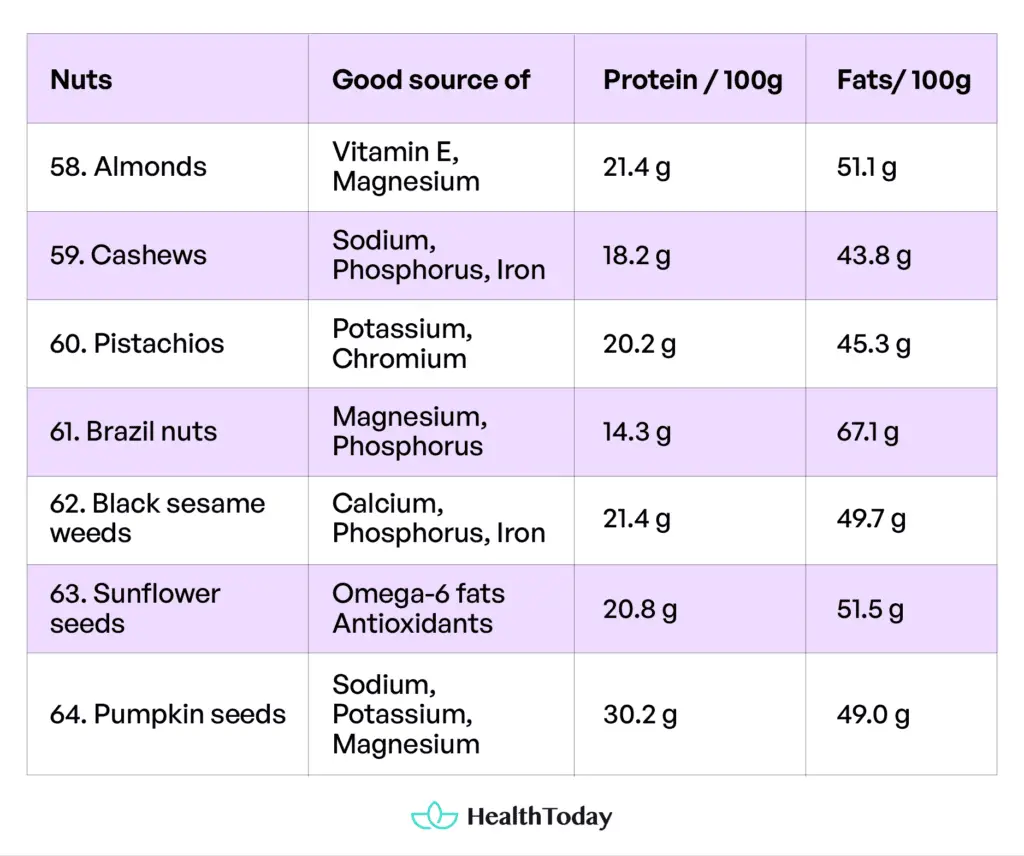
Fun fact: Almonds, in particular, are consumers’ number one choice. They are rich in monounsaturated fats and are linked to reduced risk of heart disease and type 2 diabetes (108).
Animal-based foods for a healthy diet
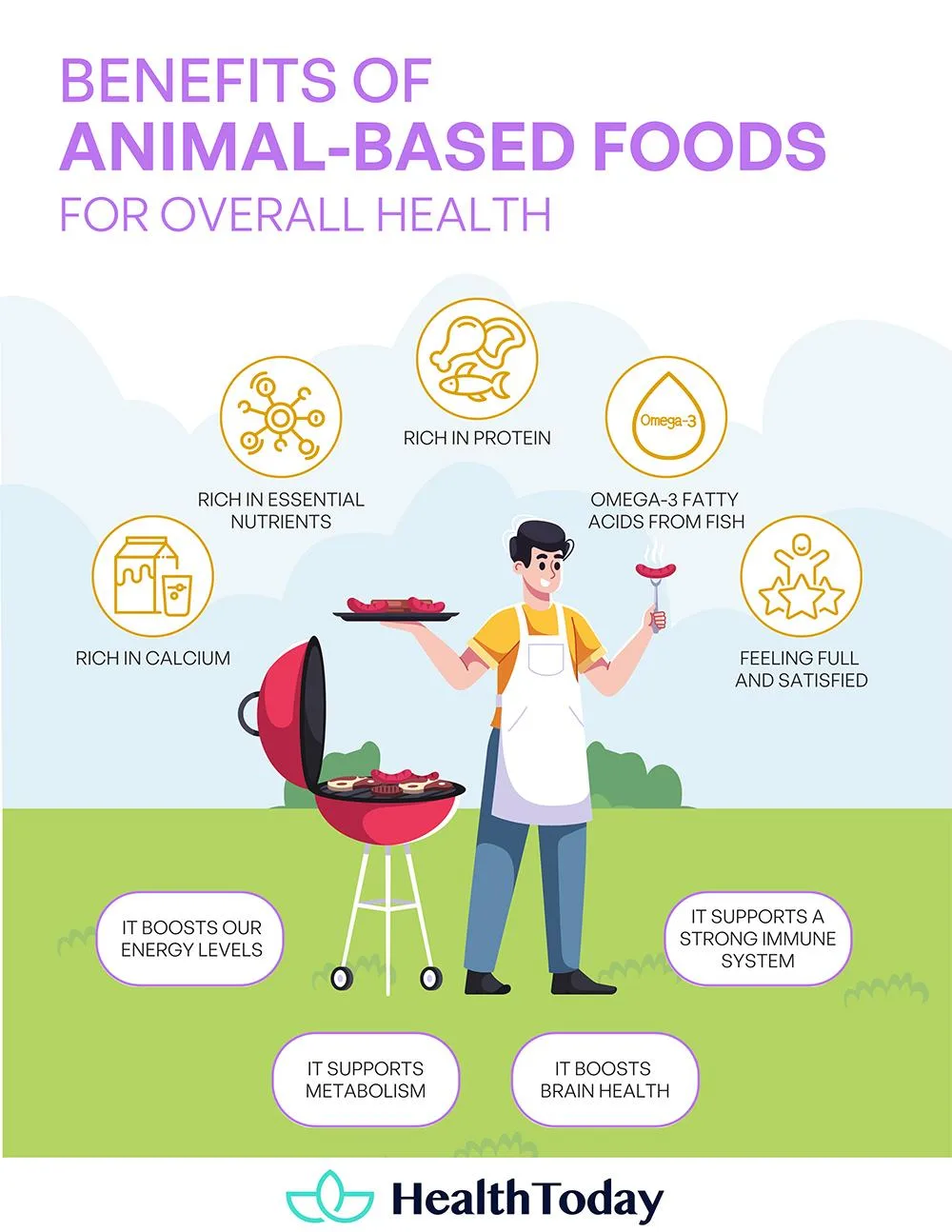
Animal-based foods such as meat, eggs, milk, and cheese all come mostly from cows, chickens, lamb, and pigs (109). They are naturally nutrient-rich foods and are usually the main sources of protein and fats (110).
Compared to plant-based foods, they are better for fat-soluble vitamins and, unlike fruit, are low in sugars which makes them a good choice for diabetics (111).
Seafood
Seafood often provides key health benefits for the brain, eye, and heart (112). They are excellent sources of omega-3 fatty acids, iodine, and selenium (113). Eating these oily fish contributes to better cholesterol levels and thyroid health (114).
- 65‒69 Oily omega-3 fish: salmon, sardines, trout, cod, and tuna.
Tuna is also considered a healthy fish. However, due to potentially high levels of mercury, tuna should be avoided in certain populations, such as pregnant women (115). Other seafood choices include crustaceans and shellfish, which are often high in vitamins and minerals:
70. Oysters and (71.) lobsters – good for iodine for thyroid health (116).
72. Squid – high in sodium, potassium, and magnesium (117).
73. Abalone – high-quality protein, low in fat (118).
74. Shrimp and (75.) crab – are rich in B-complex vitamins, especially vitamin B-12 (119 ).
Livestock
Views towards animal meats are changing. Recent news has reported that red meat is bad for humans; however, scientists have advocated the benefits of incorporating beef, pork, and other red meats into your diet (125, 126).
Red meat, when taken in moderation, is as essential as any other component in having a good diet and proper nutrition (127).
- 76‒77: Lean pork and beef
Lean pork and beef have a similar nutrient composition (128). They both provide key nutrients such as protein, thiamine, niacin, and zinc.
Contrary to popular belief, lean red meats trimmed of all fat, like pork and beef, do not necessarily raise bad cholesterol levels (129). In fact, a moderate intake of lean red meat lowers the risk of elevated blood pressure, thereby reducing the chance of heart disease (130).
Poultry
Like seafood and livestock, poultry has a similar amount of protein. The good thing about poultry is that it is lower in calories and fats with a higher water content (131).
These are all good poultry sources:
- 78‒82: Chicken breast, chicken thighs, turkey, duck liver, eggs.
Low-fat dairy products
Dairy products are a comfort food for many people. Choosing one or more of these healthful, low-fat options could decrease the risk of metabolic syndromes and cardiovascular conditions (132, 133):
83. Cow’s milk – is rich in calcium and good for bone health, while casein can boost muscle growth post-exercise (134, 135)
84. Plain yogurt – a prime source of probiotics, which improves digestion and strengthens the immune system (136).
85. Fortified goat’s milk – contains more good fats and iodine than plain cow’s milk (137).
86. Cheese – good source of fat-soluble vitamins, such as vitamins E, A, and K. (138).
Some examples of cheese with low-fat options include cottage cheese, mozzarella, and ricotta. These all contain less than 5 g of fat per 21 g serving (139).
Healthy fats for optimal health
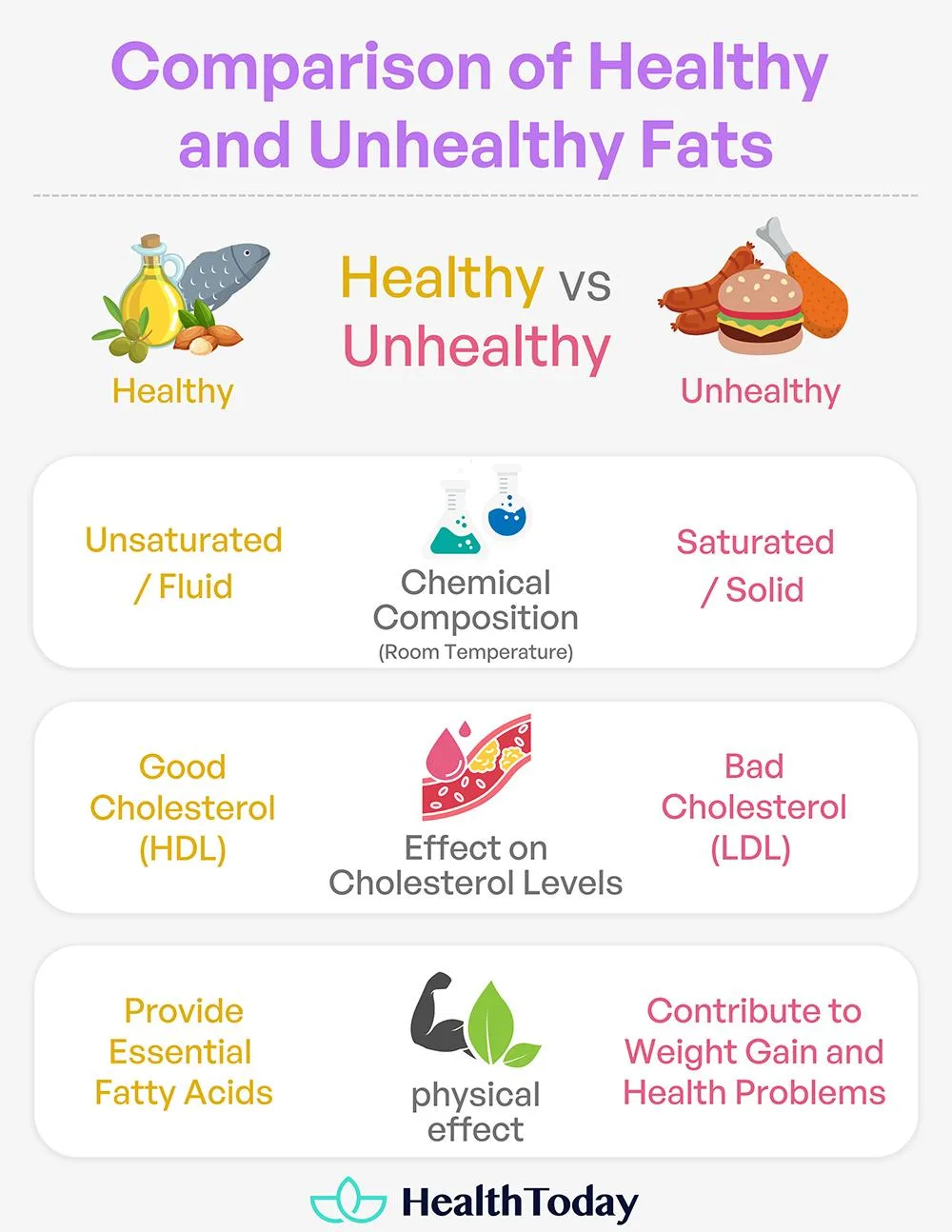
Contrary to popular belief that fats lead to weight gain and bad health, there are healthy ones your body needs, especially to absorb fat-soluble vitamins (140).
Healthy choices include monounsaturated and polyunsaturated fats. These help protect the heart by maintaining good cholesterol levels while reducing bad (141). They also serve as a cushion to protect our internal organs!
Good sources of monounsaturated fats include (142):
87. Extra virgin olive oil and (88.) sesame oil for salad dressings.
89. Safflower and (90.) avocado oil for sauteing.
91. Canola oil for frying.
While polyunsaturated fats are found in (143, 144):
92. Grapeseed oil can be used for simple sauteing.
93. Sunflower and (94.) soybean oil can be used in a variety of ways.
Superfoods for optimal health
So-called superfoods have become highly popular over the years (145). In general, they are exceptionally nutrient-dense foods with numerous benefits beyond their typical nutritional values (146).
Here are some superfoods that can power-pack your diet:
95. Amaranth and (96) quinoa – a substitute for rice with complete proteins (147).
97. Chia seeds and (98) flax seeds – often used alongside overnight oats, provide an array of fiber, plant proteins, and omega-3 fats (148, 149)
99. Goji and (100.) acai berries – popular in smoothies or fruit bowls, filled with powerful antioxidants (150, 151).
Some superfoods made from powder can also be enjoyed as drinks. These include 100‒104: maca root, moringa powder, green tea, and matcha powder.
1. Why is eating a varied diet important?
Healthy foods, and a variety of them, are essential for maintaining proper bodily functions. We need to get a full range of essential nutrients to help prevent diseases such as cancer and diabetes.
2. What are the best meal plans for optimal health?
It is advisable to stick to recommended dietary guidelines rather than fad diets. Guidelines are well-researched and suit almost 98% of a particular population. For specific kinds of diets like keto, it’s best to consult a professional.
3. How to make healthy eating sustainable?
Don’t put too much pressure on yourself, and implement changes gradually. Cravings are natural, so you can spoil yourself once in a while. But be sure to get back on track to eating a variety of healthy foods on most days.
4. What are the healthiest foods to eat?
It is always important to eat a varied diet. However, the healthiest foods to eat are nutritionally dense foods and foods rich in fiber or omega oils for their numerous health benefits.
5. Can I still enjoy popular foods while eating healthy?
Of course! Though, you might want to check the healthier versions of your favorite recipes or buy higher-quality food. They may taste the same, but organic or higher-quality foods are generally more nutritious.
Summary
Rather than following the latest eating trend, good nutrition is all about regularly eating nutrient-dense foods in the right proportions.
Here are some tips and tricks for developing good eating habits:
Plan and prep healthy meals
Creating weekly meal plans may require some effort, but over time it’s actually more efficient. Meal plans help you stick to a budget and keep your nutrition goals on track. Start with just two or three days a week.
Familiarize yourself with the most nutrient-dense foods, and make some of them your favorites and a weekly staple.
Choose healthy options when eating out
There are many tempting but unhealthy foods outside the comfort of our homes. What’s more, eating healthily takes a little discipline. When eating out, be sure to order healthy options or check online menus before choosing a restaurant.
Make healthy food a sustainable lifestyle
Mindset is always important. Eating a healthy diet doesn’t need to be an ‘all or nothing’ scenario. Don’t give up on your favorite meals completely. If you crave some cake or fried chicken, choose healthier versions and eat them only occasionally.







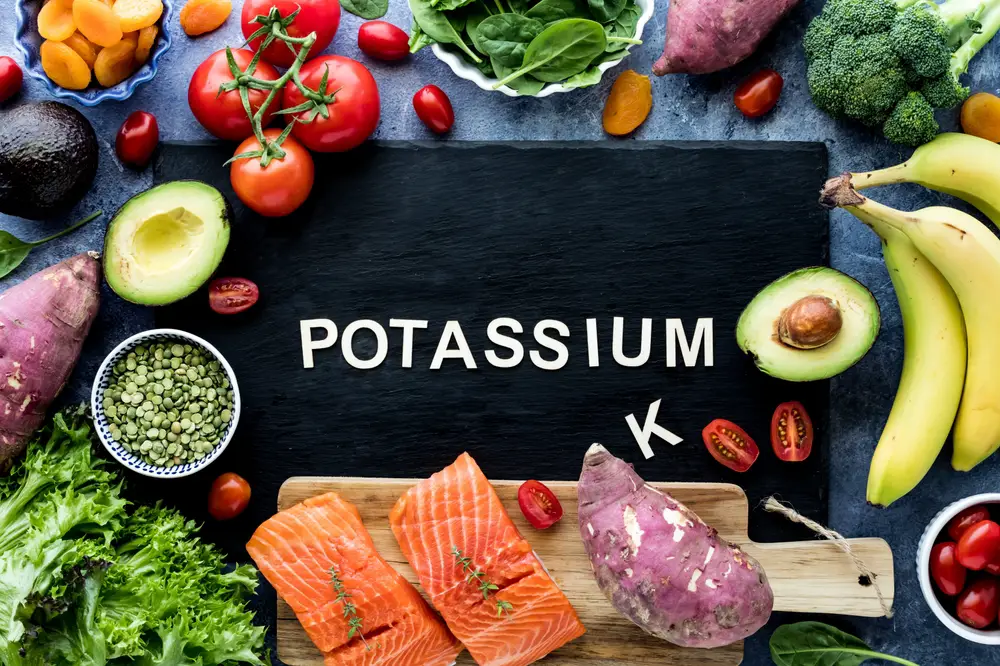



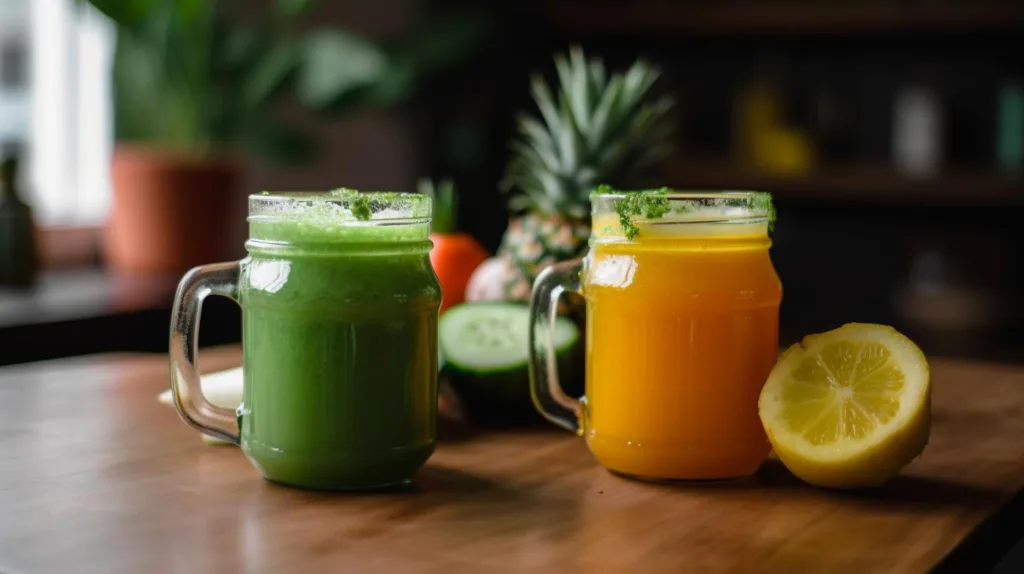





Comments
0